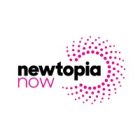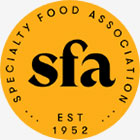

What is a language audit, how does it impact your CPG food brand narrative, and how to conduct it for your refresh?
Language has the most power to deepen a bond and spur customer loyalty. It also can create brand bigotry, which is challenging to return from. When is the last time you analyzed the impact of your CPG food brand narrative?
Widely considered the top four attention grabbers in CPG food package design are color, structure, imagery, and typography. What about the written word?
Consumers do not experience your written content and visual design separately, so why segregate them within your brand strategy? If your brand is starting to look tired, it may sound it too. To be a steward of your brand and optimize it for growth, you must consider how it speaks … everywhere.
The idea is to evaluate all of the language associated with your brand, scrutinize it against your external and internal truths, and flesh out the discrepancies.
What is a Language Audit?
Voice audit, message audit, or content audit. Whatever you call it, the idea is to evaluate all of the language associated with your brand, scrutinize it against your external and internal truths, and flesh out the discrepancies. We design in a world where consumers and employees are looking into the soul of a brand, and they are asking for consistency.
For every brand, there is a scale for language, tone, and messaging to slide back and forth across, and not all of it is consumer-facing. Foundational language is not overt to a consumer, like brand attributes used for positioning strategy or editorial style guides for consistency. Still, they will experience them through identifiable language, like brand, company, or product names, and informational language, like media and on-pack messaging. The other two areas of language to examine are aspirational: mission, values, etc., and navigation: (something as simple as a URL is still a consumer touchpoint and, therefore, an opportunity to connect).
You don’t need to go and rewrite all of your content! If you still need to look at the crosshairs of your many narrative touchpoints, then start with the bigger stuff you have done to use as a foundation. Suppose you love the tone of voice reflected on your packaging design and social media and are confident it is helping you draw connections with your audience.
In that case, you can revisit some of your foundational language to ensure it is being adhered to in these other sectors. Say the brand positioning statement of your on-the-go protein shake is to “convey optimism around the positive effects of healthy eating.” But your mission statement concerns “drastically responding to an obesity epidemic that threatens lives.” Do you see how these two ideas are at odds with each other–how vibe and tone vary widely and speak to two different consumer mindsets? Either your corporate culture or your consumer-facing messaging will be disingenuous and negatively impact the authenticity of your brand itself.
Some criteria* you can use to evaluate your CPG food brand narrative are:
Does your language across all sectors adhere to your brand values?
Are you customizing content to match what you know about your target customer or trying to convince them of something different?
Is your language easy to understand, and is the purpose apparent?
Is it creating educational value or deeper understanding for your target audience?
Is it inviting? It should make a person connect.
Do you appreciate or reward your audience in some way?
Does each piece of communication function appropriately for its purpose?
Start by asking the questions, and you will quickly see where you have inherently developed strong consistencies that speak from the brand’s heart. As for the rest, grab a clean sheet of paper and get started.
A brand equity study is equally valuable in a brand refresh. To learn more, read this article.
*Criteria adapted from Alina Wheeler’s Designing Brand Identity









